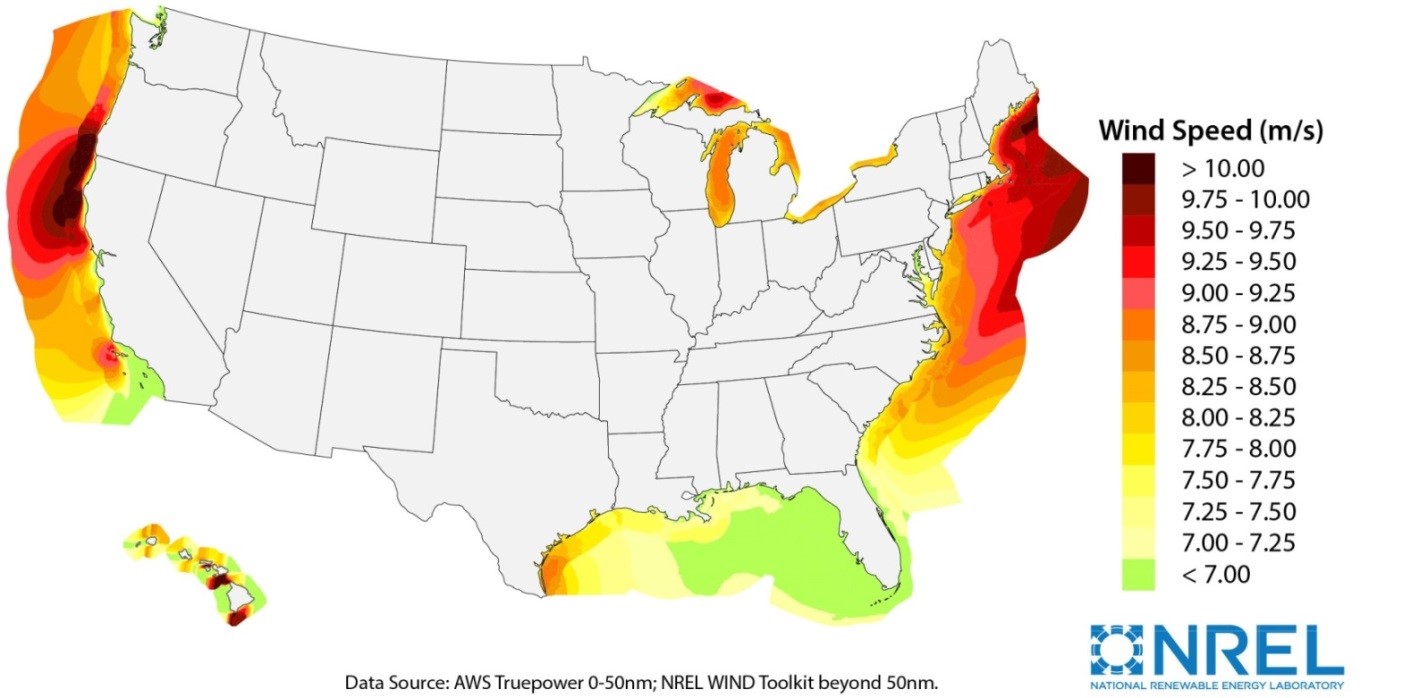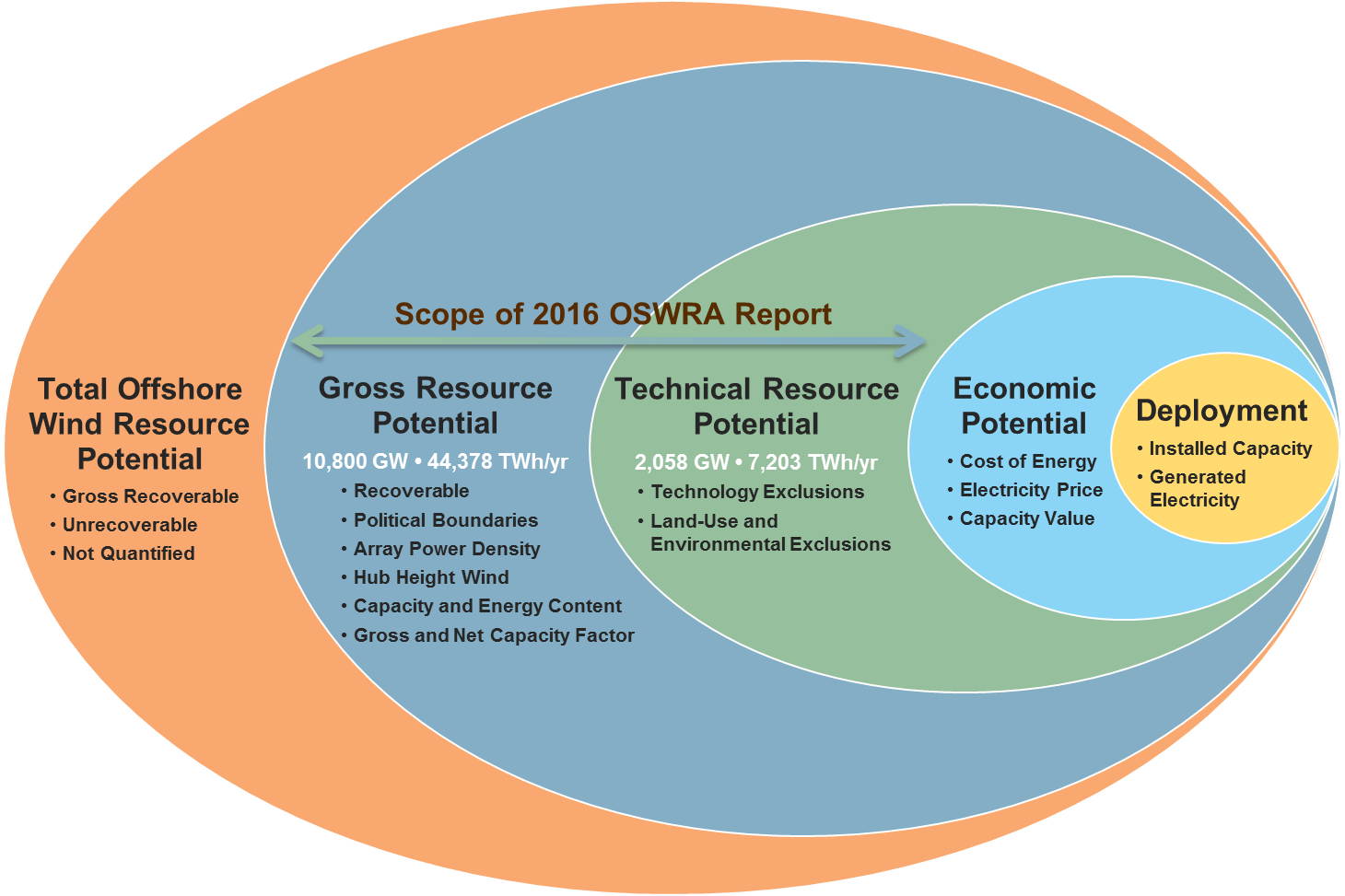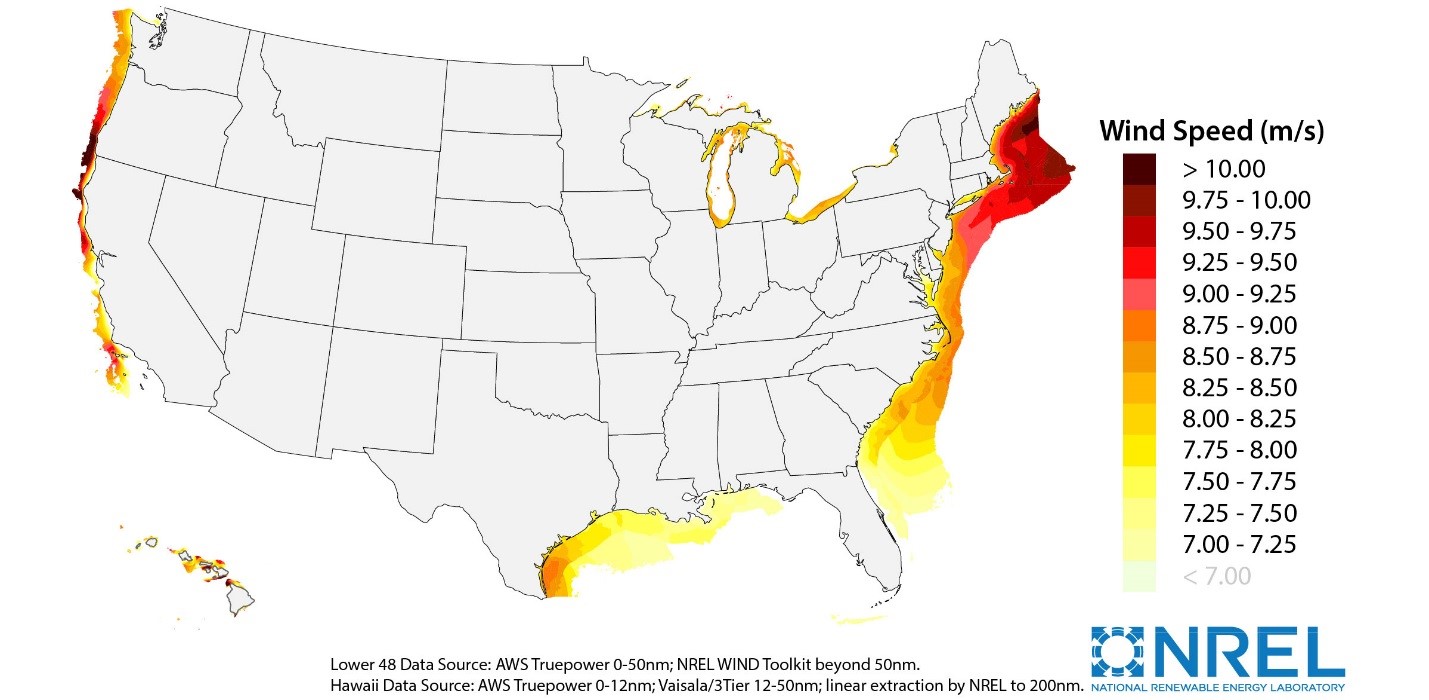Computing America’s Offshore Wind Energy Potential
 One piece of the National Offshore Wind Strategy evaluates the vast potential for offshore wind energy development across U.S. coasts.
One piece of the National Offshore Wind Strategy evaluates the vast potential for offshore wind energy development across U.S. coasts.
Today at the Wind Technology Testing Center in Boston, Massachusetts, the Secretaries of Energy and the Interior released the National Offshore Wind Strategy. The new report—a joint effort between the Department of Energy and the Department of the Interior—is a culmination of 18 months of collaboration between the two departments. To inform the development of this National Offshore Wind Strategy, the Energy Department’s National Renewable Energy Laboratory developed four supporting technical reports, one of which improves upon previous resource assessments evaluating the vast potential for offshore wind energy development across U.S. coasts. This quantitative assessment incorporates new data to keep up with rapidly advancing offshore wind technologies and applies technical, environmental, and competing-use exclusions to arrive at what is referred to as the technical resource potential.
So, what exactly does technical resource potential mean? Our analysts calculate several different levels of resource assessment, each of which provides a more refined estimate of energy potential as more filters and assumptions are added. Their first step in assessing the total amount of offshore wind energy is to analyze the wind speed at the height where wind turbines operate—approximately 100 meters from the surface—as illustrated in the map below. Researchers first calculate how much kinetic energy is present in moving air currents, better known as wind, across the coastlines and Great Lakes. This estimate is called the total offshore wind resource potential.
 Offshore wind speeds at 100 meters were used for the 2016 U.S. Offshore Wind Resource Assessment (OSWRA)
Offshore wind speeds at 100 meters were used for the 2016 U.S. Offshore Wind Resource Assessment (OSWRA)
The next step is to calculate the gross resource potential by evaluating how much of the kinetic energy in the total offshore wind resource potential can be harvested using wind turbines of a specific size, arranged in a wind farm with a specified amount of space between turbines. For this resource assessment, we used a turbine hub height of 100 meters, which reflects projected technology development trends for U.S. offshore turbines in the next five years. We also assumed a capacity power density—a measure of how much electricity generating capacity the wind turbines have in a given area—of 3 megawatts (MW) per square kilometer, based on turbine spacing that U.S. offshore wind developers have proposed. We also assumed that all of the turbines would be within 200 nautical miles of shore, which coincides with the economic boundaries of the United States.
Analysts then combine these assumptions with estimates of how much power each wind turbine can capture. For example, the same turbine in a consistently windy area will capture more energy than a turbine in a less windy spot. Factoring this in yields what we call a “gross resource potential” of 10,800 gigawatts (GW) of capacity, or more than 44,000 terawatt-hours (TWh) of electricity generation per year.
 This offshore wind energy resource classification framework illustrates the different levels of resource assessment, two of which are quantified in this new report
This offshore wind energy resource classification framework illustrates the different levels of resource assessment, two of which are quantified in this new report
44,000 TWh is a lot of energy! But realistically, we’re not going to put offshore wind turbines in every square kilometer of our oceans and Great Lakes. So, to refine the gross resource potential further to determine the technical resource potential, we first excluded areas that would not likely be developed because of current technology limits. For instance, we omitted all regions where the ocean is deeper than 1,000 meters because the systems for attaching floating offshore wind turbines to the seafloor are prohibitively expensive at those extreme depths. For the Great Lakes, we restricted the depth to 60 meters because offshore wind platforms in the freshwater Great Lakes will have the extra challenge of ice accumulation, and current floating technologies are not designed to withstand ice loading. Since projects are less likely to be economically viable where slow winds prevail, we excluded these areas as well. We also removed areas barred from energy development such as shipping lanes, wildlife refuges, and marine protected areas.
With these exclusions, U.S. offshore wind has a technical resource potential of more than 2,000 GW of capacity, or 7,200 TWh of generation per year. For context, this is nearly double the nation’s current electricity use. For comparison, approximately 90,000 homes can be powered by 1 TWh per year. This means that even if only 1% of the technical potential is recovered, nearly 6.5 million homes could be powered by offshore wind energy. According to the Wind Vision released by the Energy Department last year, developing just 86 GW, or about 4% of the U.S. offshore wind technical resource potential by 2050 would support 160,000 jobs, reduce power sector water consumption by 5%, and reduce America’s greenhouse gas emissions by 1.8%.
You can see how the technical resource potential of 7,200 TWh/year is distributed among the coastal and Great Lakes states in the map and chart below. Darker colors on the map correspond to higher wind speeds. You can also see how some of the technological exclusions impact the areas under consideration. For example, off the West Coast the water gets deep much closer to shore than on the East Coast; therefore, we excluded much of the area farther from shore on the West Coast because the water is deeper than 1,000 meters. We also excluded parts of the Florida coast because the average wind speeds are slower than 7 meters per second.
 This shows offshore wind speeds at 100-meter heights as narrowed down for calculating the technical resource potential
This shows offshore wind speeds at 100-meter heights as narrowed down for calculating the technical resource potential
 This shows offshore wind speeds at 100-m heights as narrowed down for calculating the technical resource potential
This shows offshore wind speeds at 100-m heights as narrowed down for calculating the technical resource potential
While there are many different ways that we can sustainably develop renewable resources to meet our nation’s energy needs, project developers and policymakers must consider local factors before building a project. For example, the Energy Department generally does not perform in-depth, site-specific analyses that would support project development and finance; industry and project developers who are considering a project must conduct studies focused on a particular location.
The Energy Department is committed to providing many different types of useful data on land-based and offshore wind resources that developers, regulators and other stakeholders can use to make informed siting and development decisions.
Learn more about the Energy Department’s work in offshore wind.

